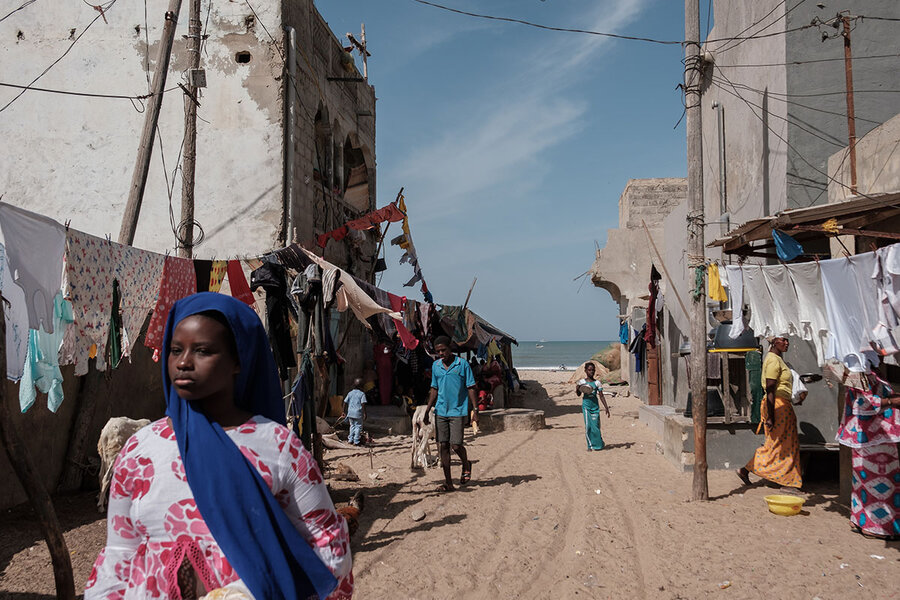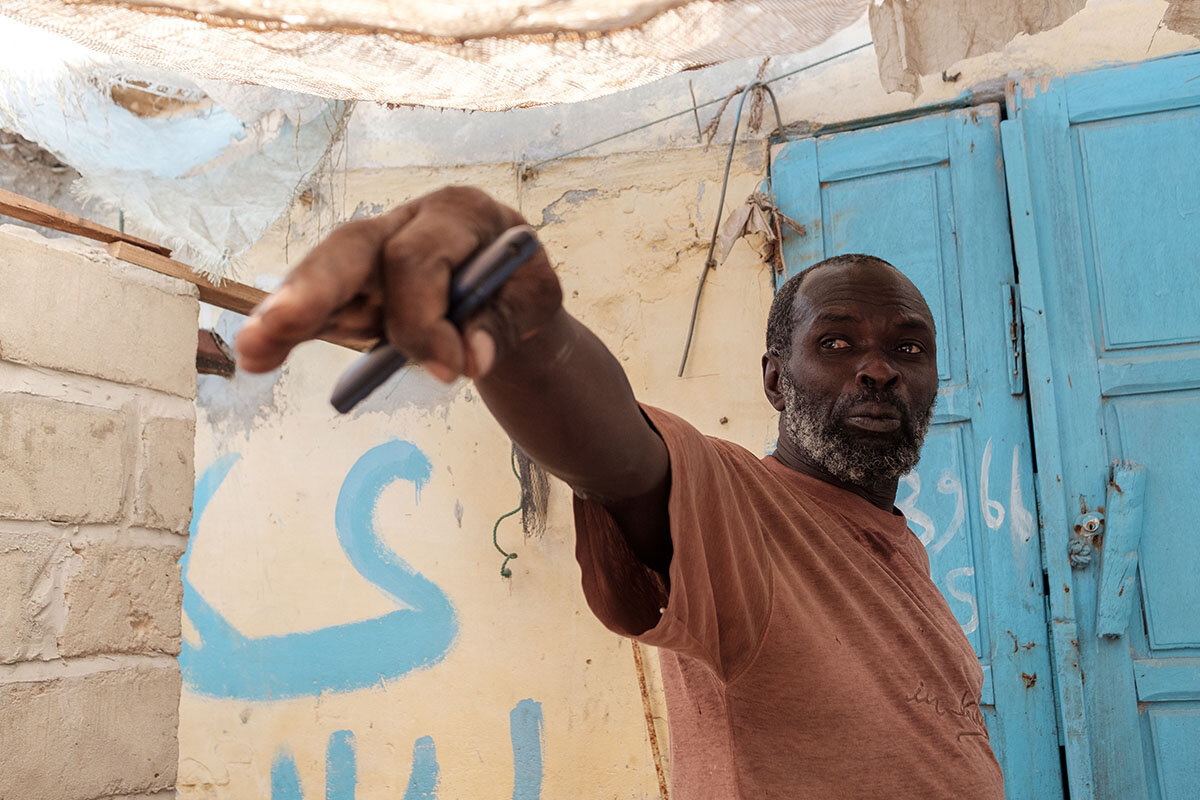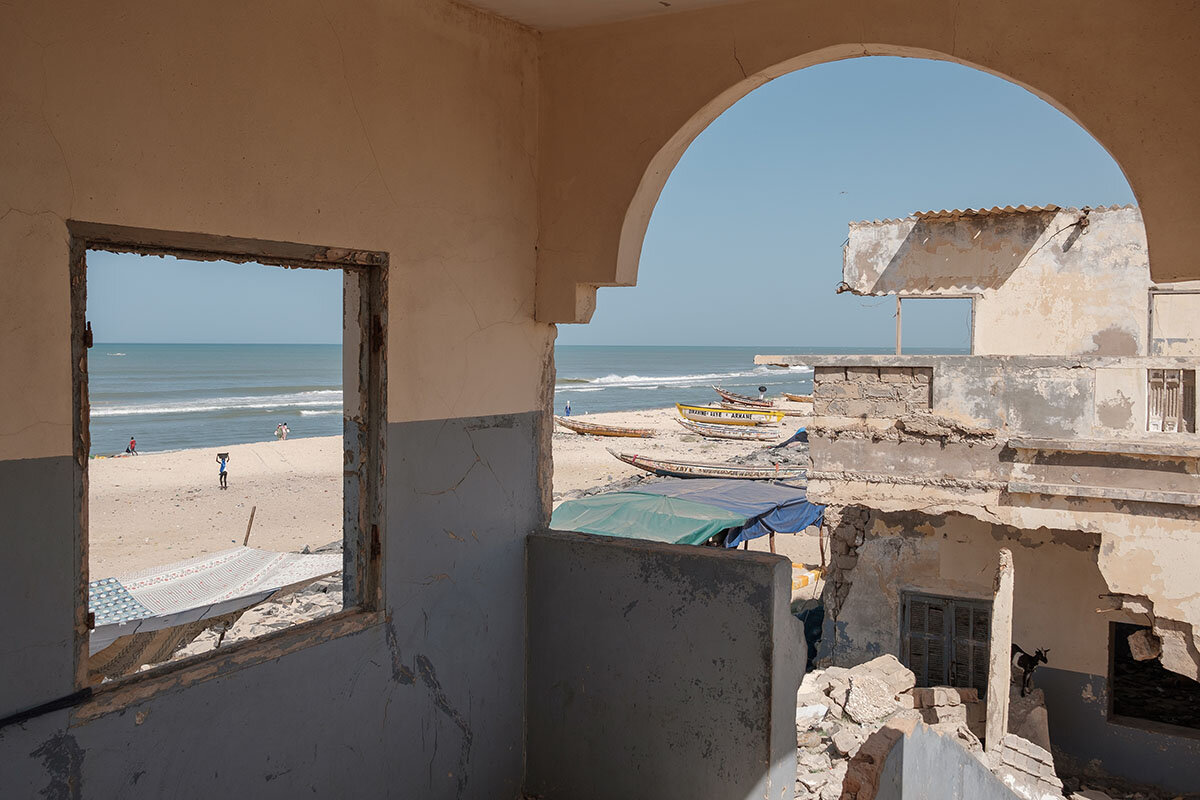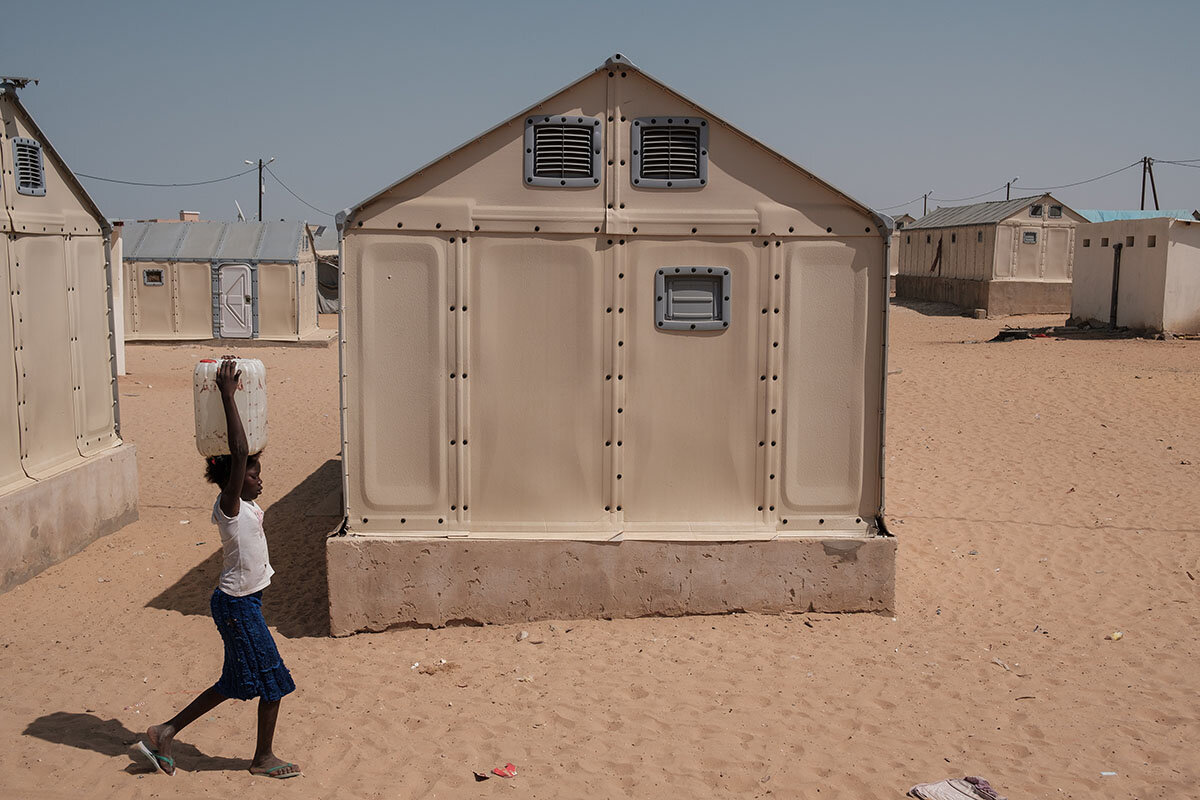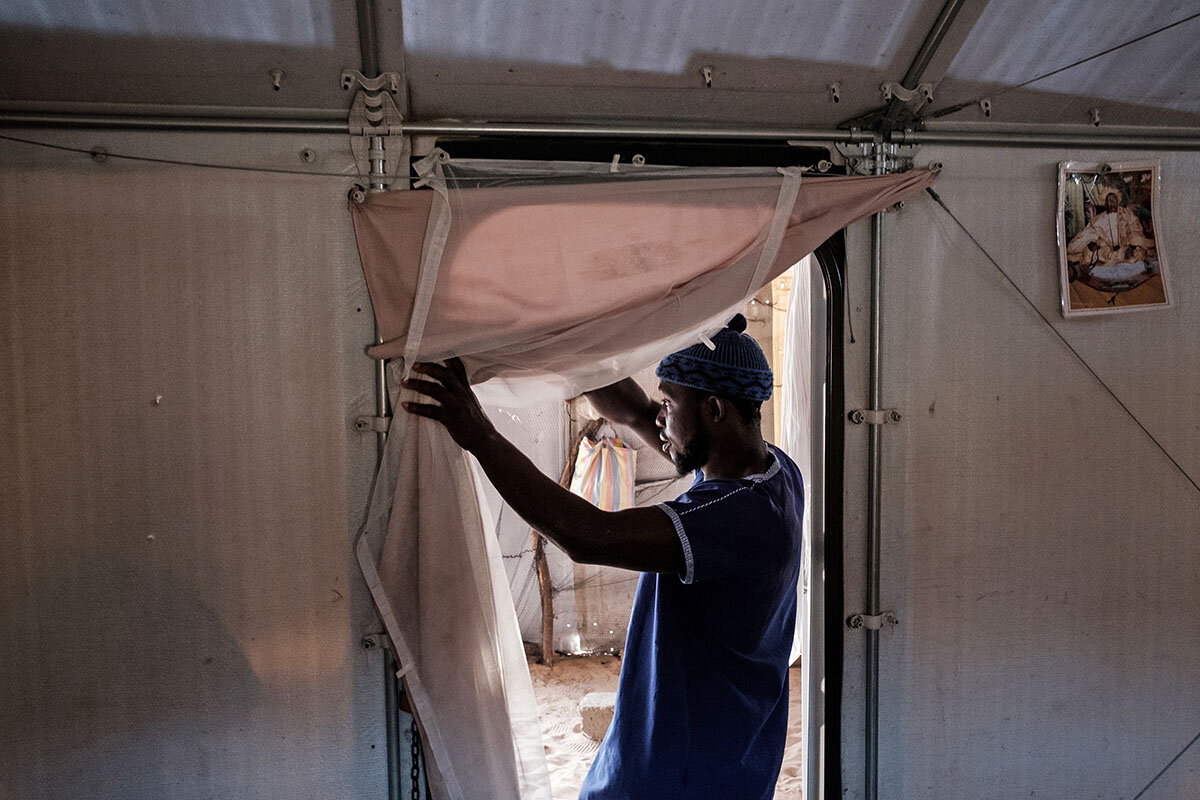‘The ocean is what we know.’ Can Senegal woo climate refugees inland?
Loading...
| SAINT-LOUIS, SENEGAL
As Madické Sène grills a pair of crabs he caught earlier in the morning, he stares out at the calm morning waters of the Atlantic Ocean.
“It used to stretch all the way out there when I was a child,” he says of the beach, pointing past a handful of brightly painted fishing boats sitting some 100 yards out in the water. Now, as he sits on a mat, laid out on a newly built seawall, the waves roll in just 25 yards away at high tide.
His mat, the grill, the crabs, the fabric he’s strung up overhead to provide shade from the sun – all of this sits atop what used to be his ten-room house, swallowed by a particularly swollen sea in 2018. Behind him lie the remnants: the last standing bedroom, a bathroom, and a wooden animal pen for his sheep.
Why We Wrote This
A story focused onPoliticians are waking up to the reality of climate migration. Senegal could offer a blueprint for how coastal African cities might deal with the complex task of relocating citizens from places that have long provided economic opportunities – and emotional links.
Mr. Sène’s set-up is replicated among his neighbors. They’re the scars leftover from the rising sea levels pummeling away at this coastal peninsula known as the Langue de Barbarie, part of the city of Saint-Louis, some 140 miles from Senegal’s capital, Dakar.
Some 3,200 residents of the peninsula’s crowded fishing quarter, Guet Ndar, have been displaced by the increasingly volatile seas, which have at times flooded the entire peninsula to the point where the ocean spills into the Senegal River on the other side. In response, the government in 2019 erected temporary displaced persons camps 12 kilometers inland. It plans to eventually replace them with a newly-built village.
But residents like Mr. Sène have no desire to leave.
“I was born here, and I’ll grow old here,” he says. “The [ocean] air we have here doesn’t exist anywhere else. We can’t farm, we can’t do anything else – the ocean is what we know.”
Senegal’s government is balancing dual goals as it battles against the damage wrought by climate change in Saint-Louis. Mitigation projects aim to save as much coastline for as long as possible, while at the same time the government is preparing for the peninsula’s eventual disappearance. Citizens face a juggling act, too, as they try to envision – or resist – a life different from their cultural and economic identities as fishermen.
“We understand – that’s their natural home,” says Ousmane Ndiaye, a social integration expert at the Municipal Development Agency, one of the Senegalese agencies, along with the World Bank, leading the construction of permanent housing. Negotiations will continue for as long as needed, he says. “That’s a general problem in almost all displacement projects.”
Rising tides
The effects of the climate crisis are already playing out across West Africa’s coastal cities, from Lagos to Abidjan. Long a magnet for economic opportunities, they are also some of the most densely populated areas. By 2050, some 113 million people across the continent could be forced to move because of the effects of climate change, including rising sea levels.
Saint-Louis, famed for its pastel-colored colonial architecture, is likely to be hit hard. Composed of a peninsula, an island, and a crowded mainland, today almost 12,000 residents are at risk of displacement as sea levels rise and the shoreline erodes. By 2080, some 150,000 people will likely have to move, according to one study, with 80% of the city at risk of being submerged in annual floods.
Waist-high walls adorn new riverfront promenades under construction on the island and the peninsula, which both sit, precariously, just barely above sea level. The seawall by Mr. Sène’s house has severely reduced the effects of storm surges, residents say. But even with those protections, residents continue to be displaced. Evacuation orders by the government aren’t enforced. Instead, almost all who have moved have done so because it was their last resort.
Some 1,500 of those former peninsula residents now live in stark, temporary housing at the displaced persons camp, called Diougop. The tent-like houses have small solar panels, but no storage capacity. Bathrooms, toilets, and taps for running water are communal. A few people sell vegetables along the sterile rows of housing, but jobs are scarce.
“There’s nothing here,” says Mamadou Gueye, a resident who moved to Diougop last year. Like many camp residents, Mr. Gueye still fishes – but now he’s forced to commute to Guet Ndar by slow buses or expensive taxis, on trips that can take up to two hours in bad traffic.
“It’s difficult. The family is back [in Guet Ndar] – the community, family, friends,” he says.
More houses – and improvements – are on the way. An empty field, currently used to play soccer, will soon host a market. More land is slated for a school. Some residents have already staked out a new life.
“It’s great here. It was great when we lived in Guet Ndar, too, but we didn’t have work that looked like this,” says Ndeye Coumba Gueye, braiding her coworker’s hair in a salon set up in a shipping container. Ms. Gueye, who was unemployed in Guet Ndar, took advantage of a state-subsidized cosmetology course with her friends – one of the many ideas the Senegalese government has thrown in to sweeten the deal of moving. Others have taken up jobs at a corner store – also set up in a shipping container – or plant vegetables in a microgarden.
“My hope is that when the houses are built, there will be people from Guet Ndar who come to live here,” she says. “Guet Ndar is crowded, there’s more space here.”
Building a new home
Ms. Gueye’s comments touch on the Catch-22 facing Diougop: More people living here could bring more jobs, and a sense of community. But no one wants to move here before that happens.
Support programs, like the cosmetology class, have helped some people adjust. But they’re far from being a pull factor motivating people to move if they don’t have to. On the contrary, many women who moved away from Guet Ndar have become unemployed, no longer able to dry or sell the fish coming in from the beach each day.
Even among those who are more optimistic about Diougop, the ocean retains its pull. And it’s easy to view the seawall on the peninsula as contradictory. So long as it props up the sandy strip, it emboldens people to stay – the same people whom the state is trying to convince to leave. Yet the limited preservation of the peninsula is also one of the only things keeping the limited hope in Diougop alive.
The sea took most of Michelle Gueye’s family’s home in 2019. She’s since moved to her sister’s house in another neighborhood, but commutes to Diougop for work. She plans on moving there once the permanent housing is finished next year.
“We can create solidarity here. We’ve already started,” says Ms. Gueye, who is unrelated to Mamadou and Ndey Coumba. “But I’ll always go back to the Langue de Barbarie. My heart is there.”




